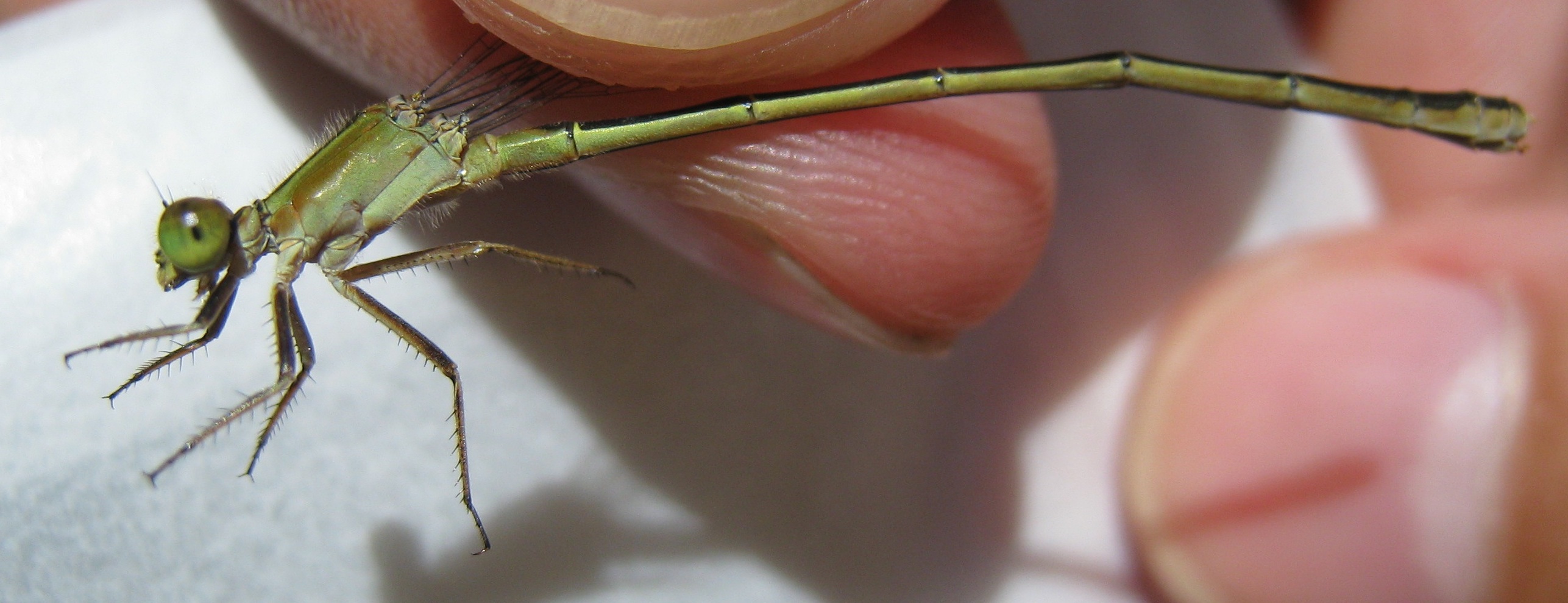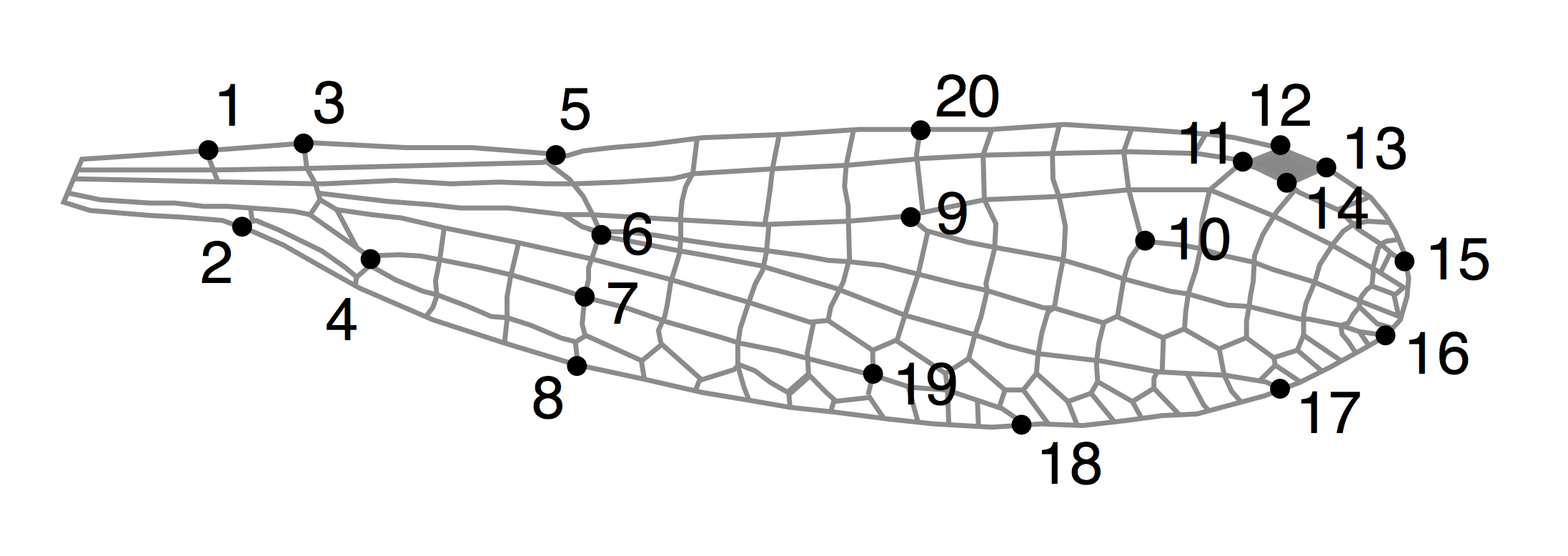Geneviève K. Smith
Scientist, team builder, startup advisor Former VP Product at Insight Data Science She / her, how to pronounce my name
bio | projects
linkedin | twitter | github | medium

Cryptic Species Coexistence | Damselfly Wing Morphometrics
Dating Shakespeare | Flu Visualization | Forest Resilience
Flight Apparatus Shapes in a Sexually Polymorphic Damselfly.
Many species of damselflies are sexually dimorphic, meaning they have different-looking males and females. In some cases there are many different kinds of female morphs, and often one of the female morphs resembles the male type in many features. One example of this occurs in Ischnura ramburii, a damselfly species native to North America that invaded the Hawaiian islands sometime in the 20th century.



From top to bottom: male, androchrome female, and gynochrome female I. ramburii.
We wanted to know if in addition to having male-like pigmentation and sometimes behaving like male damselflies, whether or not these male-mimicking females also had wings shaped like males. To do this we measured wing shapes from individuals collected throughout the Hawaiian archipelago as well as in part of their native range (Texas). Then we used a statistical tool (Canonical Variate Analysis, or CVA) to determine which shape features are most reliable for distinguishing our three morphs: males, androchromes, and gynochromes.

Using digital images of wings from hundreds of damselflies, we measured the relative coordinates of 20 landmarks selected to capture variation in total wing shape, area, and size, as well as the position and size of the pterostigma (indicated by grey shading).
We found that female wings are largely all the same. This suggests that the demands of being a female damselfly (mainly carrying around eggs) overrides any other forces that would tend to select for more male-like flight apparatus.
Results of a Canonical Variates Analysis comparing wing morphologies of male, androchrome female, and gynochrome female I. ramburii collected in Oahu, Hawaii, Kauai, and Texas.
For more details, you can read our paper here.